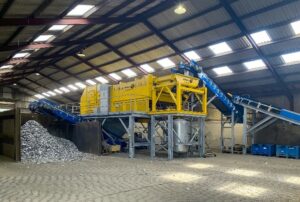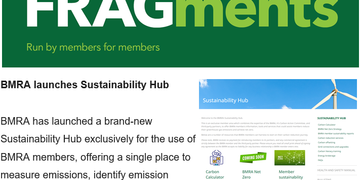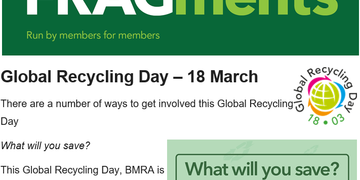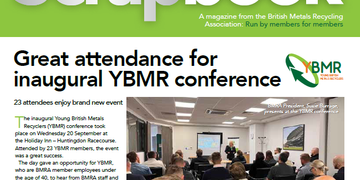How are the two compatible?

Upstream sorting processes: The STEINERT EddyC® eddy current separator recovers the non-ferrous metals and the STEINERT ISS® induction sorting system purifies fractions even further.
Steinert, of which BMRA member, Magnetic Separations Ltd, is the sole UK agent, recently interviewed Jesper Fournaise, Outbound Sales Manager of Stena Recycling about how exactly dry density separation using x-ray transmission fits with the issue of sustainability
In Roskilde, 30 km to the west of Copenhagen, Denmark’s based Stena Recycling is putting its faith in Steinert’s x-ray transmission technology, when manufacturing ultra-pure aluminium. Given that aluminium is increasingly replacing materials such as steel and can be 100% recycled, this metal has a very promising future.
Using secondary aluminium, also known as green aluminium, cuts energy use in production by up to 90 % compared with virgin material and thereby avoids tonnes of CO2 emissions. If recycled aluminium is used to produce new products, aluminium manufacturers do however need their secondary raw materials to display consistently high levels of purity.

The STEINERT XSS® T EVO 5.0 sorting system produces ultra-pure aluminium.
“This is one of the challenges resolved by sorting technology,” says Mr Fournaise, who is responsible for aluminium production and sales. When sorting with x-ray technology, density is the key distinguishing criterion. Classifications are very precise and enable high quality metals to be produced. Here the sorting machine is used to separate free heavy metals, aluminium compounds, free magnesium and wrought and cast aluminium parts, for example. Technological advancement paves the way for sustainability
“Advancements in technological sorting represent a great difference. Now, here in our own country, we're able to use x-ray technology to meet very high-quality standards in order to put the metal back into commercial use”, he added.
For a long while now, it has not just been about the sales price of a metal, said Fournaise, but also about the documentation of how material flows are handled, for example distances transported. “By using secondary raw materials, our customers, the smelters, cut CO2 emissions and sorting is one of the most important primary stages for this.”
At the end of the day, we are comparing the environmental impact of primary goods with the use of secondary raw materials. When producing these metals, Jesper Fournaise’s team focus fully on quality that is defined not by themselves but their customers. “Because we strive for qualities similar to those of primary aluminium, we opted for sorting technology from Steinert. Steinert simply delivers the values we need for copper, zinc, manganese and magnesium. We've conducted continuous tests and now we've found the right level of quality.”



